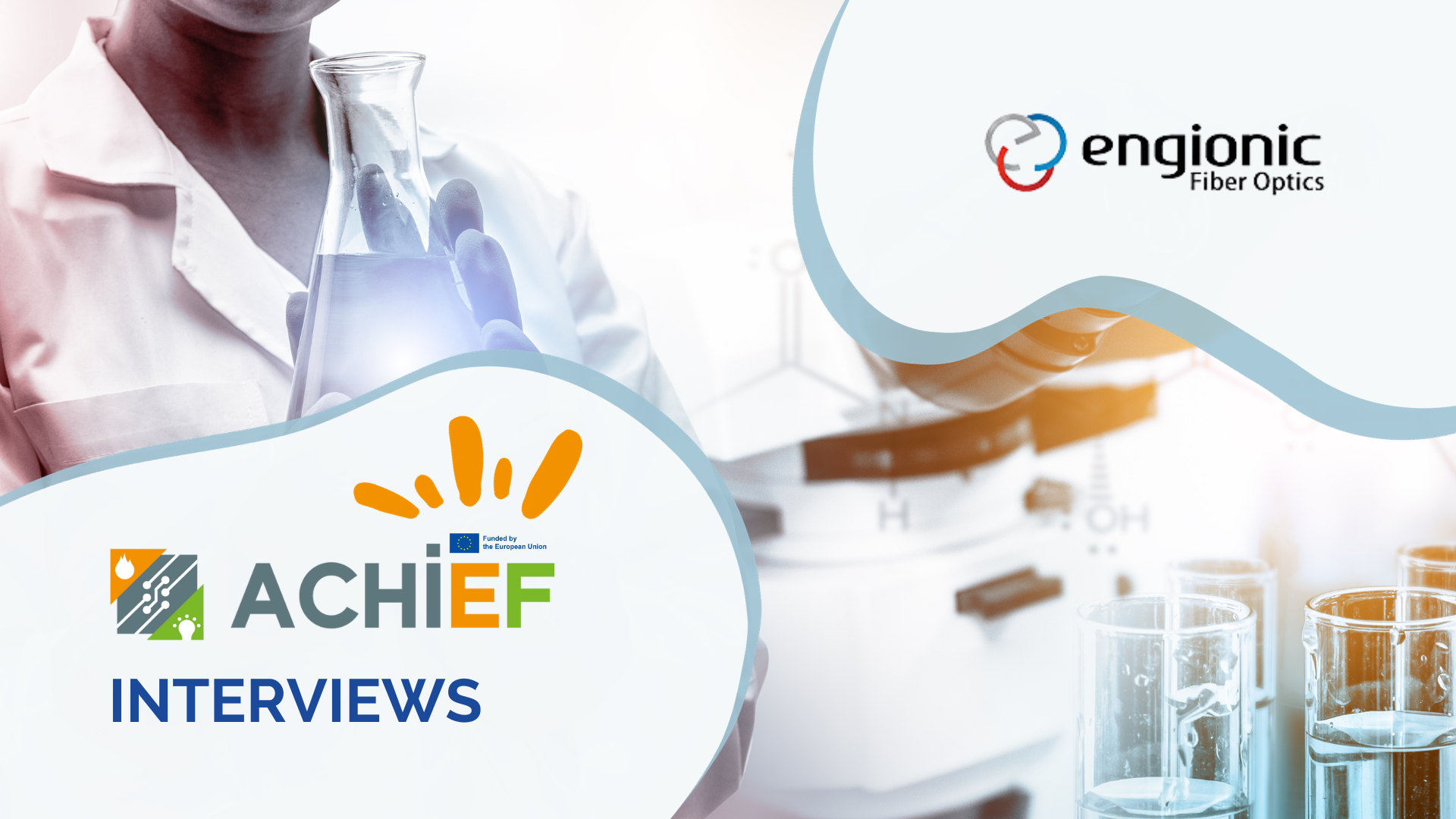![]() 02/01/2024
02/01/2024
Redefining success: Conversations with Engionic
Why did you join the ACHIEF project and what’s your role?
The ACHIEF project is a great opportunity for Engionic to develop new technologies for production of high temperature fiber optic Fiber Bragg Gragg (FBG) sensors. As a small company we appreciate the chance to work together with other partners in this high technology field, as it is difficult to do this kind of development on our own. Within the project we develop the technologies to inscribe FBGs that withstand temperature that enable there use in industrial processes and, together with the partner AMIEN we develop the technology to embed them in HESA materials to mount them to the measurement object.
What technology is used Engionic to develop advanced high-performance temperature sensors?
The high temperature sensors are developed by using the so-called point-by-point femtosecond inscription technology. Here a pulsed laser with ultrashort pulses is focused in an optical fiber were the high energy of the optical radiation modifies the refractive index of the glass material. The fiber is moved along its axis and therefore every light pulse produces a dot. If the distance between them is right these form an optical grating that reflects light and that is used a as sensor as the period of the grating changes when the fiber thermally expands or is stretched. Standard FBGs, produced by other techniques fade out at temperatures around 300°C, this is the reason we need to use this complicated technology.
Based on your experience in fiber optic, how is Engionic contributing to reduce their environmental footprint and enhance the circular nature of their processes?
Next to using renewable energy and passive energy saving techniques as insulation, optimizing an industrial process itself to reduce energy and resources consumption is one off biggest chance to reduce the environmental footprint.
Sensors are the key feature to processes control as they enable to optimize the process by using their data to establish advanced process control. Fiber optic sensors play an important role in new sensor technologies as the close the gaps left by established sensing technologies. In the ACHIEF project we develop temperature and strain sensors that can be used at high temperatures of up to 800°C or more and are suitable to the harsh industrial environment and still deliver the data needed for a more efficient process.
What have been the main challenges you are facing to develop sensors with the ability to withstand harsh environments?
The main challenges are associated with binging everything together to make a sensor that really performs in the application. For us this is mainly the development of FBGs that can withstand the high temperatures and still fulfilled all the other specifications i.e., can be embedded in HESA materials. This includes the optical modification itself, but also to develop a process that can use optical fibers that are coated with a metal coating that we had to strip before we could inscribe in the fiber. This fiber also needed to have the right material composition to enable us to inscribe high temperature FBGs and could be recoated with metal afterwards. So, as we are going to the edge of what the technology could do, we need to find the right parameter for basically everting to make the development possible.
How would you explain to a wider public what will be the impact of the ACHIEF project and how do you see the future of the project?
The ACHIEF project’s direct impact may not be immediately evident to the broader public, given its specialised technical application. However, the results will empower energy-intensive industrial sectors to reduce their ecological footprint. The collective responsibility for these emissions lies with all of us, considering that we use the products generated by these sectors in our daily lives.
Our belief is that the results of the ACHIEF project will serve as a crucial component among many innovative technologies and will contribute to reduce the environmental impact that each one of us leaves behind.
ENGIONIC MAIN RESPONSIBLES TEAM
Dr. Andreas Pohlkötter, Head of R&D




